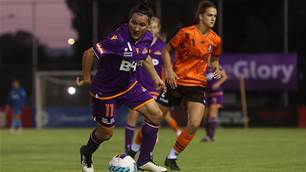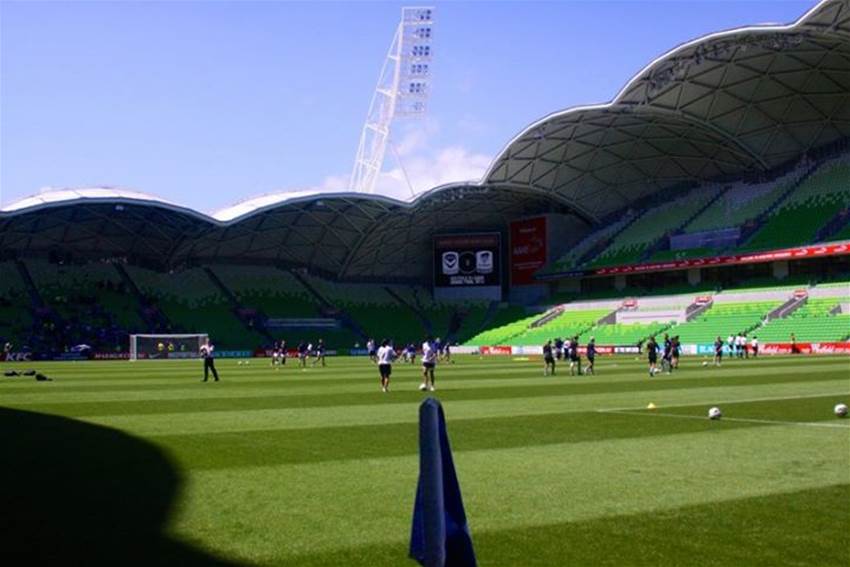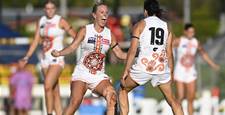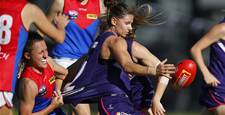When the W-League fixtures were released last Monday afternoon, and after the initial excitement had ebbed away, very quickly questions were asked about the "fairness" of the competition.
When the W-League fixtures were released last Monday afternoon, and after the initial excitement had ebbed away, very quickly questions were asked about the "fairness" of the competition.
Canberra United CEO Heather Reid raised the issue in an article in The Canberra Times.
''The lack of fairness in the draw when you don't have a full home-and-away campaign was highlighted last year when right until the last round, any of six teams could have made the finals."
''You're at a disadvantage to some extent when you don't play everyone twice … the competitiveness of the league is so close that we can't afford to only have 12 rounds.''
And when we asked fans what their thoughts on the fixtures were the overarching theme was parity.
"Needs a level playing field by extending to full home and away season," said Kaz Singer.
A sentiment which was echoed time and again by other supporters including Rosalie Viney.
Very excited about the upcoming season, but really disappointing that we still aren't getting 2 full home and away rounds - the contrast of 12 rounds with the 21 rounds in the A League is stark, and impacts on the capacity of players to get essential match experience, but also on the capacity of the W League teams to build a following.
Currently the W-League runs for 12 rounds over four months. It's a given that an extra round (meaning the clubs play each other three times) in the W-League would be nice and although that is but a dream, at the very least, players, club administrators, journalists and fans want parity. That means a full home and away season; two extra round or eight matches.
But what is the price of fairness? We did some research to quantify what this would mean.
Breakdown of costs and marketing
The W-League is administered and financed by three different bodies; Football Federation Australia (FFA), Member Federations (MF) or A-League clubs. These three bodies bear the responsibility for the W-League and club management arrangements as well as sharing the costs of running the competition.
The FFA
In terms of administration, the FFA's main role is to provide a centralised management structure for running of the W-League including to:
- manage and appoint referees;
- negotiate with the media, including the ABC, on broadcasting of matches; and
- deal with commercialisation and coordination, monitoring and regulation of fixture arrangements.
Once the season starts many of the administrative duties fall to the A-League clubs / Member Federations with the FFA only picking up the administrative reigns again during the finals series.
In the early years of the W-League the FFA also centrally marketed the league. Football with style anyone? However last season the clubs were provided with a stipend of $5,000 for the implementation of club specific media strategies including social and digital media. Despite the increased media coverage, the early whispers are there may be a return to the central marketing/media promotion of the league, although this has not gone down well with all the clubs
Financially the FFA's biggest costs are:
- the airfares and accommodation of clubs travelling interstate;
- bus travel for games involving the two Sydney teams, Newcastle and Canberra; and
- accommodation and related costs of referees.
The travel and accommodation includes airfares for 18 persons per away game, depending on the club and their opponent, and it falls to the clubs to pay for any additional players or staff. The frequently quoted figure for the FFA's costs per round was $50,000.
A-League clubs/Member Federations
The burden of administration during the regular season is shouldered by either the Member Federations or A-League clubs. Until recently nearly all W-League clubs were managed, financed and held together by the Member Federations but as it stands for Season 6, three clubs, Brisbane Roar, Sydney FC and the Western Sydney Wanderers, will be administered by their A-League counterparts.
The work done and the financial and resource investment made by federations like Football West, Football Federation South Australia, Football Federation Victoria, Northern NSW Football Federation and Capital Football should not be overlooked or under-estimated. In fact, many of the Member Federations took control of the W-League teams when their A-League counterparts in effect "washed their hands" of them.
This management includes all the day to day running of the team, player management, sponsorship procurement, promotion, media and community engagement as well as the game day costs. These costs include:
- ground Hire ($1,000 - $5,000). The costs associated with the ground hire increases if the match is scheduled to be a broadcasted by the ABC;
- match Day expenses (eg Security, medical, food and ice for both teams, ball kids, volunteers and entertainment) ($500 - $1,500); and
- expenses for the visiting team.
The expense of running a match day varies from club to club but was in the vicinity of $5,000 - $10,000. In addition to the game day costs there are the staff costs (administrators, coaches and medical staff) and player payments (if any) which results in expenses of approximately $150,000 per season for a club.
The final party to consider in the equation is the ABC as two extra rounds would also involve the broadcast of two extra matches. The oft quoted cost of the broadcast of one W-League match is $50,000.
Fairness at what price?
From the information we were provided above, an extra two rounds of the W-League would be a cumulative additional outlay of $210,000 - $220,000 for all three stakeholders.
While the expenditure for the ABC and the clubs/federations are essentially fixed, it is the expenses of the FFA that could allow for those additional rounds, if, and only if, the other two stakeholders were willing.
While here in Australia we play all our league games on the weekends, this is not the case for the rest of the world. In Europe and the US matches are frequently played midweek. In fact the recently completed National Women's Soccer League saw the likes of Sam Kerr, Lisa De Vanna, Caitlin Foord and Kyah Simon playing 2-3 games in the space of seven days with long road trips not unusual.
This would be one way of cutting down the travel and accommodation costs, in particular the airfares. For example a Brisbane Roar could play Sydney FC on a Friday night and possibly line up to play the Newcastle Jets on a Sunday.
There's precedent already with last season Perth Glory remaining on the East Coast when scheduled to play two East Coast teams in a short period of time.
From the modelling we undertook, this possible solution would cut down costs between 50%-70% and, if this scheduling occurred across the season, the reduction in costs would be even greater.
However this solution does raise other questions of fairness. Logistically it makes sense that the midweek games be on the East Coast with 4 of 8 teams situated in NSW and ACT. Therefore, by virtue of distance, Perth Glory, Adelaide United and to a lesser extent the Melbourne Victory and the Brisbane Roar would be the teams most disadvantaged.
There is also the question of availability. With the competition essentially an amateur competition (in terms of remuneration and not organisation and standard of play!), all of the W-League players are either still in High School, studying at university/TAFE/or other educational institutions or working during the week. A mid-week match would result in a loss of income and/or further time off school for the players.
Therefore if an extra two rounds were to be scheduled into the season, someone would be paying the costs; the stakeholders or the players.
As a final note, at the conclusion of last season the FFA surveyed the clubs as to whether they would like a full home and away season of fixtures. Those results have not been released.
Let us know your thoughts.
Related Articles
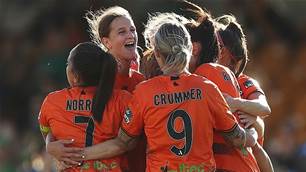
Updated Again: A-League Women Round 5 and rescheduled games schedule
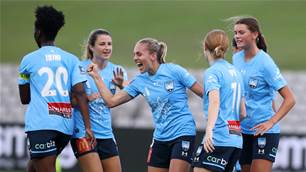
A-League Women Round 7 schedule
